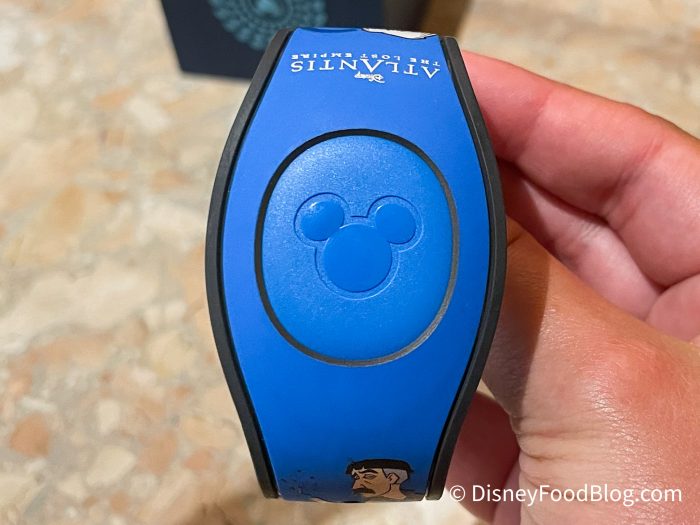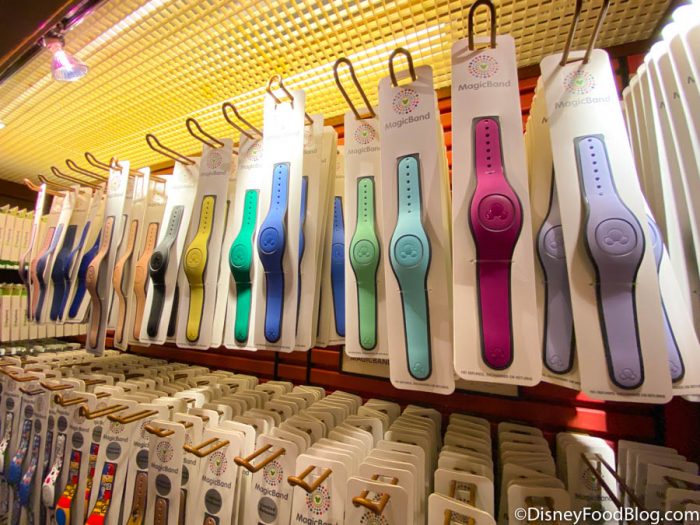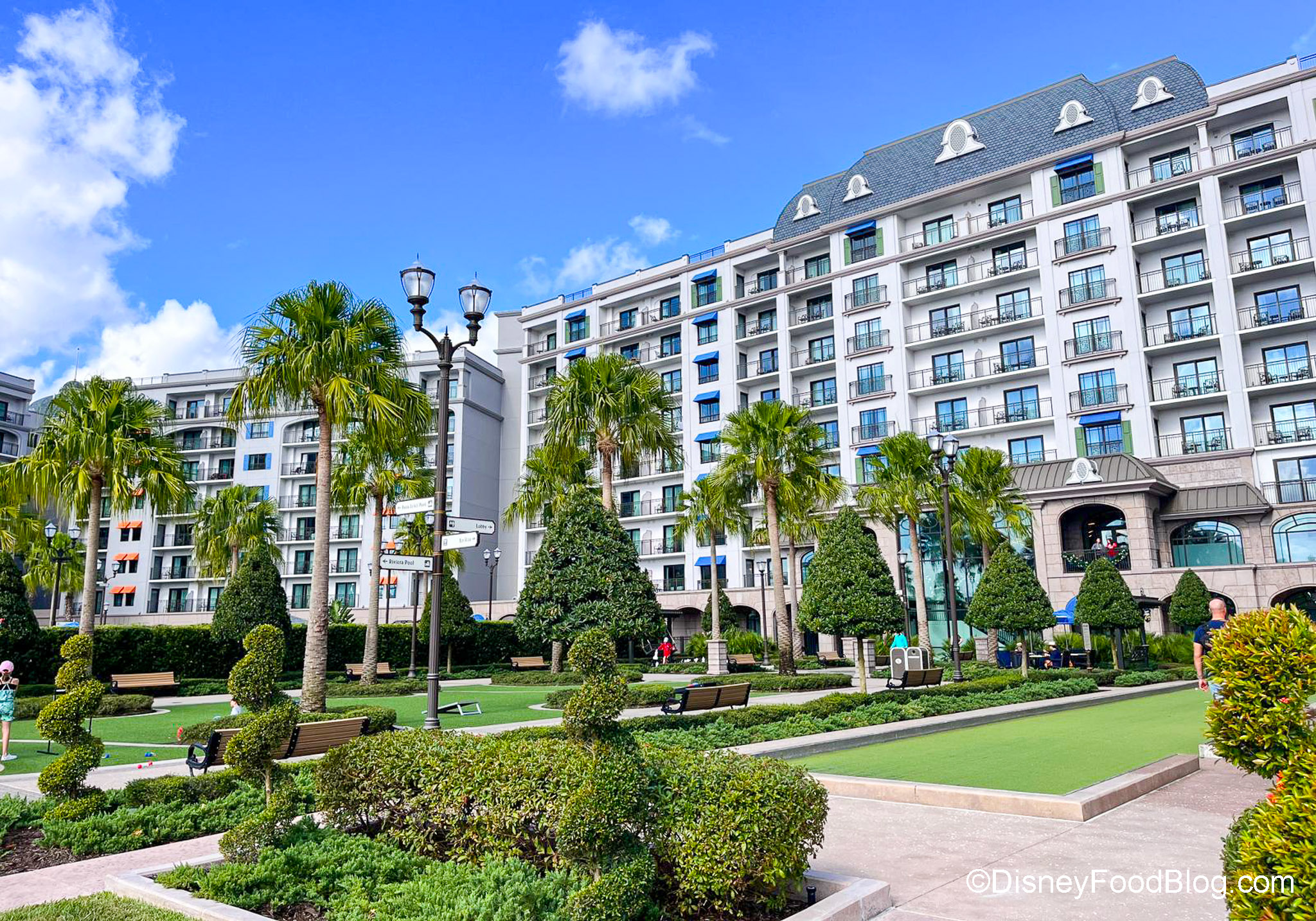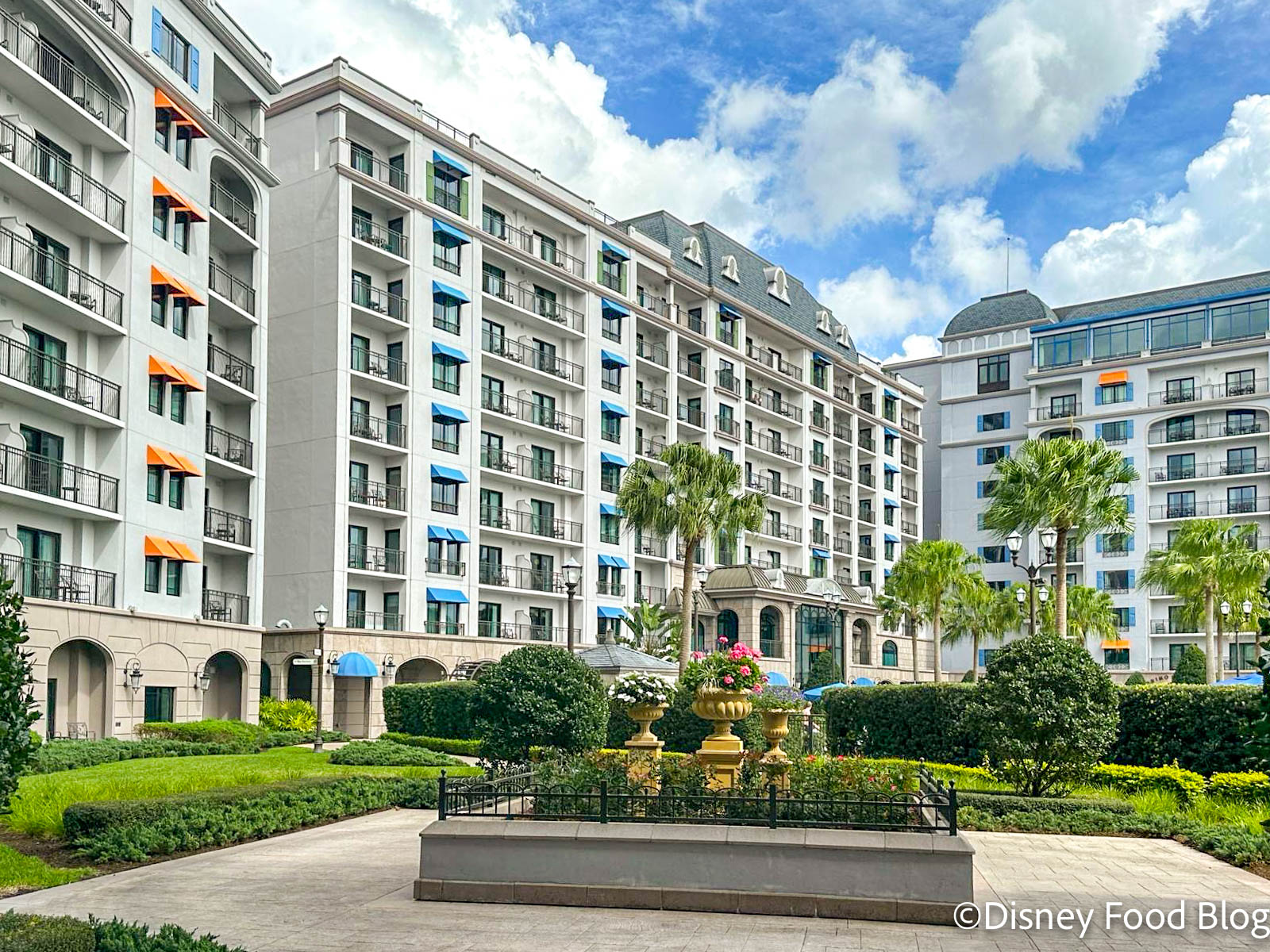The Walt Disney Company is recognized worldwide as a leading business in the entertainment industry.
With six popular theme park destinations across the world, booming direct-to-consumer streaming services, and distribution of entertainment via multiple networks, Disney is doing a bit of everything these days. But, in order to achieve its unique status, the company has had to take some risks over the years — sometimes at the cost of $1 billion or more!!! Today, we’re taking a look at some of those $1 billion bets and whether they’ve worked out so far. How many times has Disney struck out and how many times have they hit a total home run? Let’s find out!
The Creation of MagicBands, MagicBand+, and MyMagic+
If you’ve visited Walt Disney World in the past few years, then you’re probably very familiar with MagicBands. These technology-based wristbands can help in you MANY ways with just a tap of your wrist. They store lots of your information and help keep all of your travel plans in sync with MyMagic+ (Disney’s overarching planning system that includes MagicBands, My Disney Experience, and FastPass+).
MagicBands can help you use FastPass+, get your on-ride photos through PhotoPass, bill a ridiculous amount of souvenirs to your room 😬, open your hotel door, and more! It’s all tied together with the “magic” of an RFID chip.
This system was created as a means to minimize planning obstacles that guests may face, and have most (if not all) aspects of their trip easily accessible with just the tap of their band and other interconnected technology. This cohesive way of storing information was meant to, and in some ways really has, eliminate previously common issues like losing tickets, misplacing FastPasses, waiting in backed-up lines, not having a credit card handy, and other inconveniences. Together, MagicBands, MyMagic+, and the My Disney Experience app have completely transformed the way guests plan for their Disney World vacations.
But, as you might imagine, developing a completely integrated system to be used by millions of people comes at a price. According to the New York Times, Disney invested approximately $1 billion in this project, essentially betting that this enormous change in infrastructure would ultimately improve how guests plan their trips and go about their days in the parks.
Lots of research went into the development of this project. As WIRED shares, an entire sound stage was created which depicted a full-scale presentation of the new experience with the use of MagicBands. Different rooms represented the various scenarios guests would encounter and the ways in which the new MagicBand and MyMagic+ systems would operate.
Disney saw this whole system as an opportunity to vastly improve guests’ experience, allowing them to create more magical memories and less stressful moments. For example, by transitioning from digital from FastPass+ to Disney Genie+, guests could save valuable time. Gone are the days where you’d have to quickly walk to a ride just to secure a return window later in the day. Instead, guests now have to pay to skip the line by purchasing Disney Genie+ through the My Disney Experience app.
There’s no denying that this system changed Disney World as we had previously known it. But, there are still changes coming to this program today. MagicBands that were once complimentary for Disney Resort hotel guests are no longer free as of the beginning of 2021, and Disney has shared exciting new updates about the next generation of bands, MagicBand+.
MagicBand+ will be rolling out in the Disney parks summer 2022 and will feature new technology that will allow for more guest interaction in the parks! MagicBand+ can do everything that its predecessor could, plus color-changing lights, haptic feedback, and gesture recognition.
Guests will even be able to interact with various aspects of the parks, like the 50th Anniversary Character Statues. Not only that, but MagicBand+ will allow guests to become bounty hunters in Star Wars: Galaxy’s Edge!
Disney has also rolled out a new technology-based system — MagicMobile. This system allows guests’ phones to act as a MagicBand — linking park tickets, ride photos, and more, directly to your mobile device. Previously, Disney announced guests could use their phones to open their hotel room doors, and now guests can even get their PhotoPass pictures with their phone instead of a MagicBand.
Ultimately, this $1 billion investment was a major technological turning point for The Walt Disney Company. Guests today are still reaping the benefits of a convenient planning system, and Disney likely continues to profit from these results as well. The creation of MagicBands, MagicBand+, and MyMagic+ became a staple for Disney World and raised the bar for other theme parks around the world.
Will MagicBand+ deliver the all-inclusive guest experience that the original MagicBand sought out to? It’s possible. But ultimately, we’d call this investment a home run overall. The technological system, as a whole, has become key to the Disney experience and with the evolution from MagicBand to MagicBand+, this seems like only the beginning.
Click here to see everything you need to know about MagicMobile
Disney California Adventure Park
Disney California Adventure Park, the second theme park at Disneyland Resort, opened in 2001. This park worked to combine elements of California, like some of the state’s history and culture, with the magic of Disney. However, following its opening, Disney California Adventure fell short of Disney’s original attendance goals and ultimately sat in the shadow of Disneyland Park. In the fall of 2007, an expansion project was created to redesign the park. As the Wall Street Journal reported, this expansion project was estimated to cost about $1.1 BILLION.
The park received a major overhaul which incorporated more Disney characters and dug deeper into specific time periods in California history. The existing districts were reimagined to appeal to more guests. New additions included Toy Story Midway Mania!, the incredible nighttime show World of Color, The Little Mermaid: Ariel’s Undersea Adventure, and much more.
Sunshine Plaza was transformed into what we now know as Buena Vista Street. The giant “CALIFORNIA” sign that stood in front of the park, along with select attractions and some of the theming in this area and other areas of the park, were removed. Now, Buena Vista Street is home to shops, restaurants, and a nostalgic feeling of Los Angeles in the 1920s. And other parts of the park have been reimagined to prioritize the incorporation of Disney characters.
Also, a very important land came to fruition as part of the overhaul — Cars Land. This new area added lots of character to the park (literally), along with three rides and some fun food options. Guests are now able to step right into Radiator Springs along with Lightning McQueen, Mater, Cruz Ramirez, and more!
Ultimately, this $1.1 billion bet in the revitalization of California Adventure was a win for The Walt Disney Company. As the Hollywood Reporter noted, this massive overhaul of California Adventure caused attendance rates to significantly increase. Overall, the renovations “helped boost attendance by 22.6 percent in 2012 to 7.8 million visitors.” Even in early 2013, the Hollywood Reporter was already noting that “Disney’s $1.1 billion revamp of California Adventure is looking like money well spent.”
The 2020 TEA/AECOM Global Attractions Attendance Report shows that California Adventure was the 13th most visited amusement park worldwide with over 1,000,000 guests in 2020 — and that’s including being closed due to the global pandemic.
And now that the Avengers Campus has opened, we can only expect that attendance to skyrocket as more and more Marvel fans flock to DCA. This new land boasts a brand new attraction, restaurant, lounge, and food carts, merch locations, and all the Marvel characters you might recognize from your favorite film!
Click Here to See Our FIRST Impression of Avengers Campus!
$1 Billion Increase in Park Project Budget
The Parks and Resorts segment of The Walt Disney Company is one that massively drives revenue for the company overall. In 2017, it was announced during a company earnings call that spending on theme park projects would be increased by nearly $1 billion, as shared by Skift. This, of course, was a massive increase, but Disney had some huge projects in the works at that time.
At the time, Star Wars: Galaxy’s Edge was in the works at both Disneyland and Disney World. As one of the most immersive lands Disney has ever created, LOTS of money went into the creation of brand new rides, dining locations, entertainment/unique shopping experiences, and thousands of Imagineering details.
Additionally, Toy Story Land was still in the process of being created at the time (AKA, MORE $$$). This increase in park spending likely went towards the creation of Woody’s Lunch Box, attractions like Slinky Dog Dash and Alien Swirling Saucers, and Andy’s backyard as a whole. When the land finally opened, it had incredibly high guest demand and it continues to be popular to this day.
As Skift reports, at the end of fiscal 2017, $3.2 billion of The Walt Disney Company’s $3.6 billion of total capital spending went directly to the theme parks and resorts segment. During the fourth quarter of that year, company revenue overall had fallen and the company reported a lower profit. However, the parks and resorts segment demonstrated a 7% increase in operating income.
Skift notes that the increase in operating income was mainly driven by international parks, like Disneyland Paris, where a special celebration brought in more guests. Bob Iger, who was CEO at the time, noted that positive results in Disney’s parks around the world show that Disney has “ample opportunity to continue to invest and continue to expand those businesses.”
Disney’s increased investment in its parks has proven to be a home run for the company. Star Wars: Rise of the Resistance, Galaxy’s Edge, Toy Story Land, and more new rides have essentially made Disney’s Hollywood Studios one of the most coveted parks in Disney World at this time. A huge step up from a few years prior when it was still largely considered a half-day park by many guests.
The investment of $1 billion into parks spending ultimately widened the opportunity for Disney to create rides and experiences that will draw guests to the parks and maximize the possibility for increased revenue over time.
Click here to see everything you’re doing wrong at Hollywood Studios
Disney+
When it comes to streaming services, The Walt Disney Company must’ve said something along the lines of, “we’ll see your $1 billion and raise you $16 billion.” Disney has noted that they expect to spend between $14 and $16 billion on direct-to-consumer services overall, and $8-9 billion specifically on Disney+. That’s a LOT of dough.
Amid the ongoing global health crisis, Bob Chapek noted that the company would be prioritizing a shift to direct-to-consumer services following the success of Disney+. For a business that has so heavily relied on its classic movies being released in theaters, this shift in focus could be seen as a risk for the company.
Following the reported multibillion-dollar losses from the park closures, the large impact of the pandemic on movie theaters around the world, and the success of Disney+ at the time, Disney chose to change a bit of their focus. And so far, it seems to have worked out well.
Fans will be reaping the benefits of this major investment in Disney+ for YEARS to come with the hoards of new content announced to come to the platform. Disney has said it is their goal to release more than 100 titles(!!!) to Disney+ each year. Disney’s current CEO Chapek has noted that “new content drives subscribers,” and it seems Disney is truly putting their money where their mouth is based on the massive amount of shows and movies on the way.
Thus far, Disney+ has been extremely successful. It gained more than 100 million subscribers in its first full year, surpassing even Disney’s own expectations. Analysts have upgraded Disney’s stock in the past partly based on the success of Disney+. And current Executive Chairman Bob Iger has called Disney+ a “beacon of hope.”
But, with Disney spending so much money on the platform’s development…is it profitable?
Though some titles on Disney+, like Raya and the Last Dragon, have initially become available through the system’s Premiere Access service which requires an additional payment, other major movies, like Pixar’s Soul, have been released to all subscribers at no additional cost.
When it comes to shows, Disney is spending lots of money there as well. The Hollywood Reporter has noted that The Mandalorian is said to cost $15 million per episode.
It’s currently projected that Disney+ will be profitable in Fiscal Year 2024, so it’s not profitable just yet.
The company hopes to achieve its goal of obtaining between 230 and 260 million paid subscribers by 2024, and it’s certainly on its way. With one price increase having already taken place, and more enticing content on the way, the streaming service’s revenue is in a good position to grow.
Overall, it seems that Disney+ is currently operating under that “you’ve got to spend money to make money” mentality. While it may not technically be profitable yet, it is drawing in subscribers and likely encouraging subscribers to pay extra for the paid content, buy Disney+ related merchandise, and spend their money in other ways that are ultimately all relate back to the service and Disney as a whole.
Not only that, but Disney+ will be adding a second subscription tier to its existing service, which will come at a lower price point — and ads.
The success of Disney+ has been massive and Disney certainly seems to expect that it will continue to grow as time goes on. For The Walt Disney Company, it looks like (at least right now), this was a multi-billion dollar bet worth making.
Click Here to See Our Analysis on Whether Disney+ Is Actually Making Money.
Sometimes you’ve got to take some pricey risks in order to maximize success. Disney has certainly done that. Over the last few years, Disney has taken some massive hits financially, particularly in the parks department, as a result of the pandemic. After more than a year of being closed, Disneyland has finally reopened, but many other aspects of the Walt Disney Company have still yet to return. Still, some of the billion dollar bets they’ve made in the past seem to have worked out.
As the company makes more changes and takes more billion-dollar bets (as we expect they will), we’ll continue to look for updates and see how those future investments play out. Be sure to check back with us here at DFB for more updates.
Click here to everything you need to know about the EPCOT Transformation
Join the DFB Newsletter to get all the breaking news right in your inbox! Click here to Subscribe!
WE KNOW DISNEY.
YOU CAN, TOO.

Oh boy, planning a Disney trip can be quite the adventure, and we totally get it! But fear not, dear friends, we compiled EVERYTHING you need (and the things to avoid!) to plan the ULTIMATE Disney vacation.
Whether you're a rookie or a seasoned pro, our insider tips and tricks will have you exploring the parks like never before. So come along with us, and get planning your most magical vacation ever!
Which of these billion-dollar investments do you think have paid off the most for Disney? Tell us in the comments!

















































 Our handy (and portable!) ebook guides make sure you get the best deals and can plan a vacation of a lifetime.
Our handy (and portable!) ebook guides make sure you get the best deals and can plan a vacation of a lifetime.

I love your blog, you’ll explain to me how Disney+ can 230 billion subscribers when the population of the world is around 7.9 billion. Did you mean million?
I will just use the Disney resort provided key card. No magic bands, no problem for me. As for Star Wars, marvel and the rest, oh well… can’t afford the ticket price so it does not matter any more. My days of spending days at the parks are over.
Barry, yeah, that should be million. It would be a little ambitious to expect every human on the planet to have three or more subscriptions. 😉 I’ll have the editor fix this.